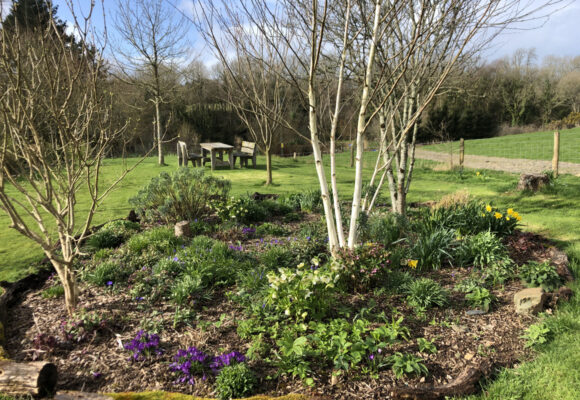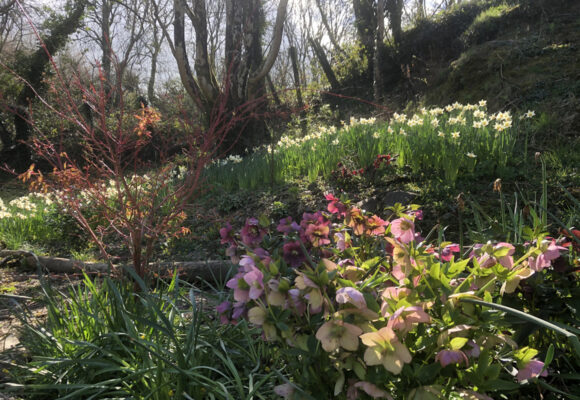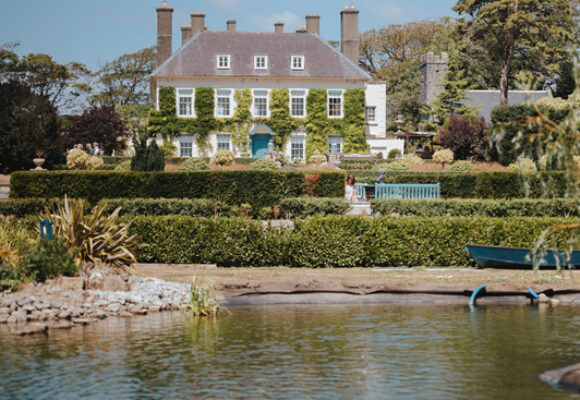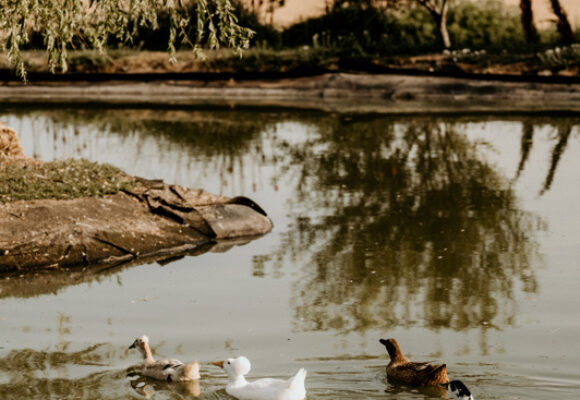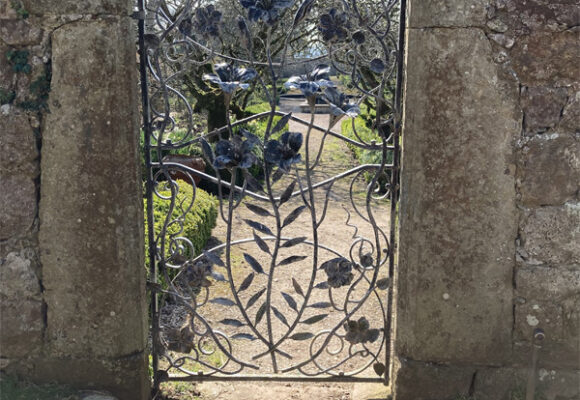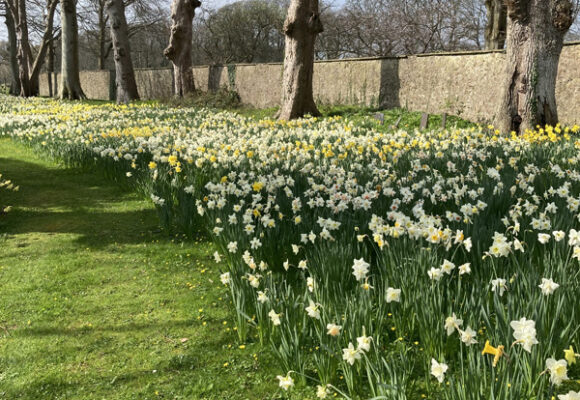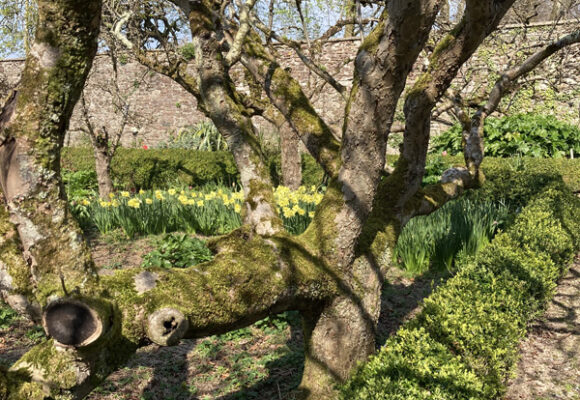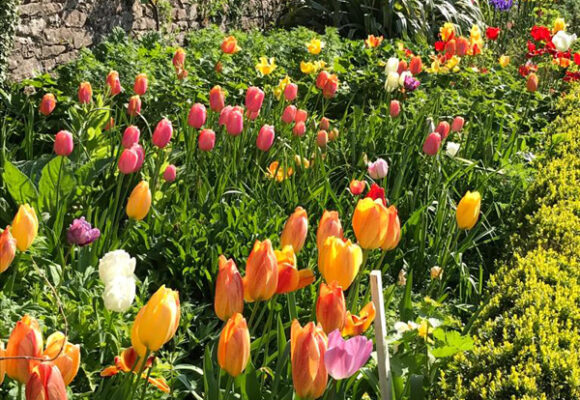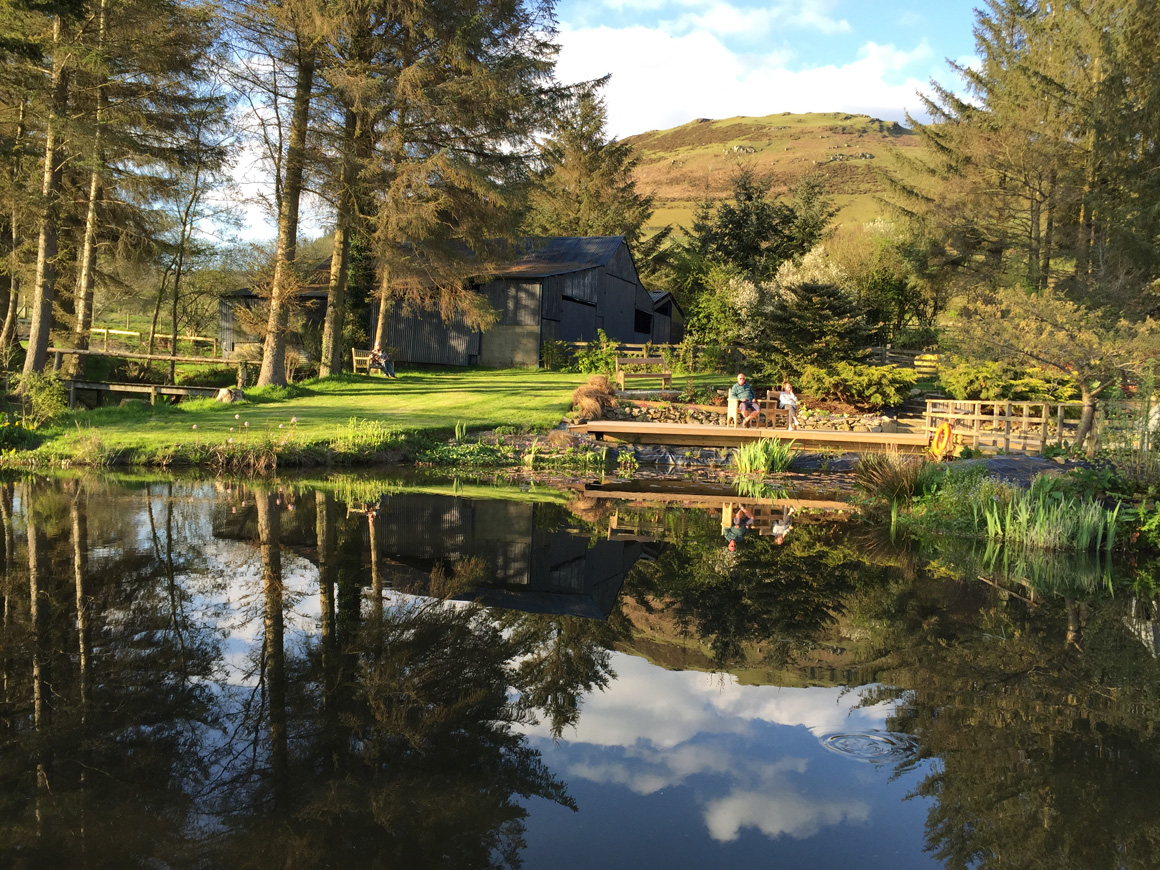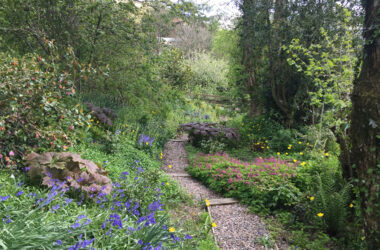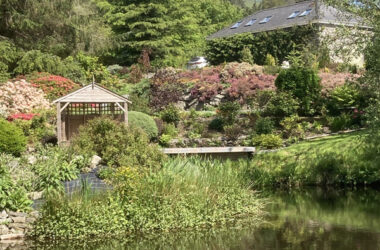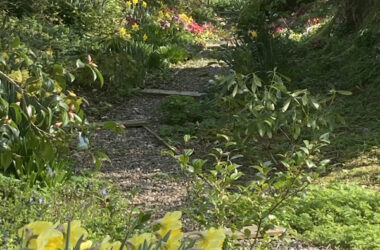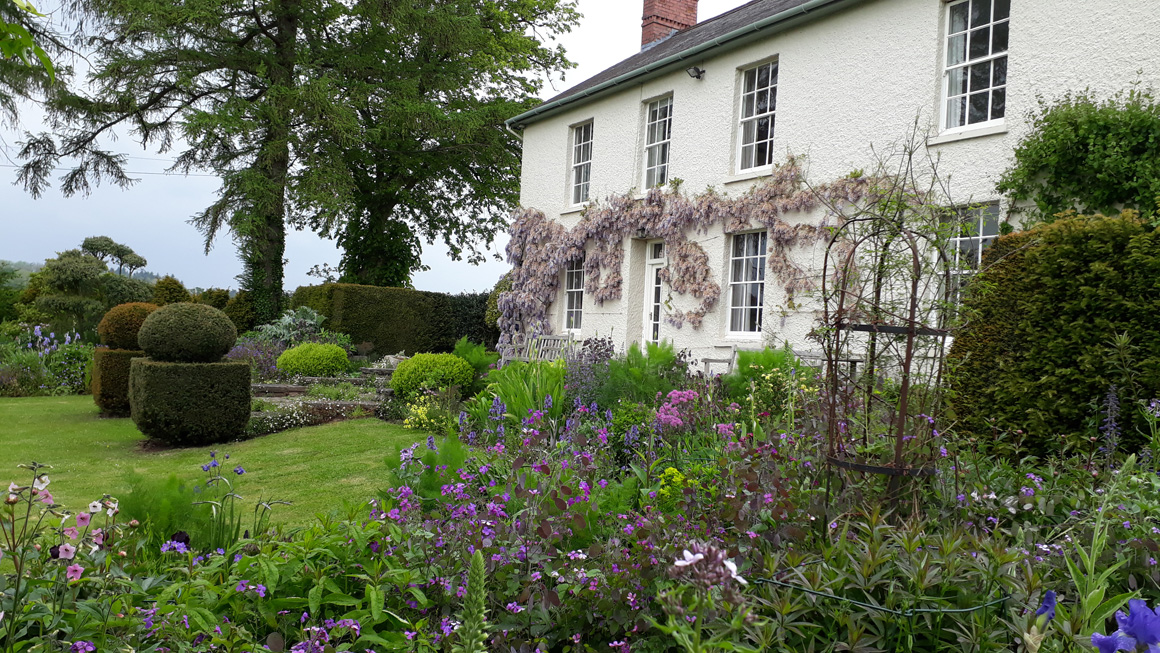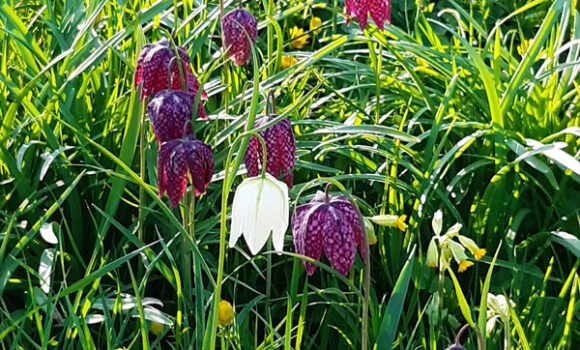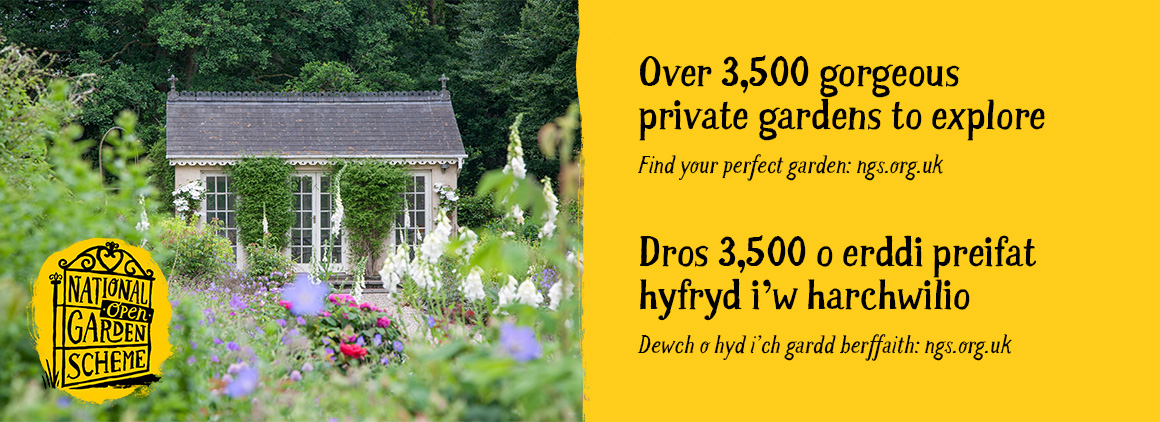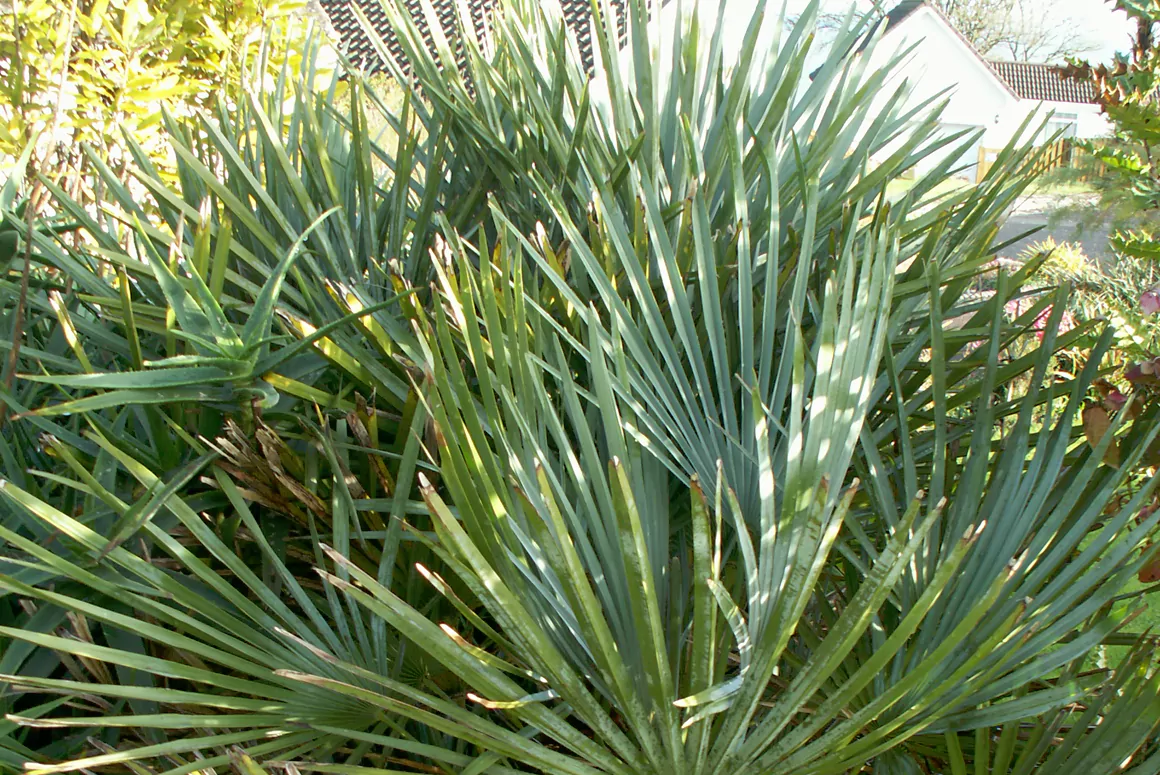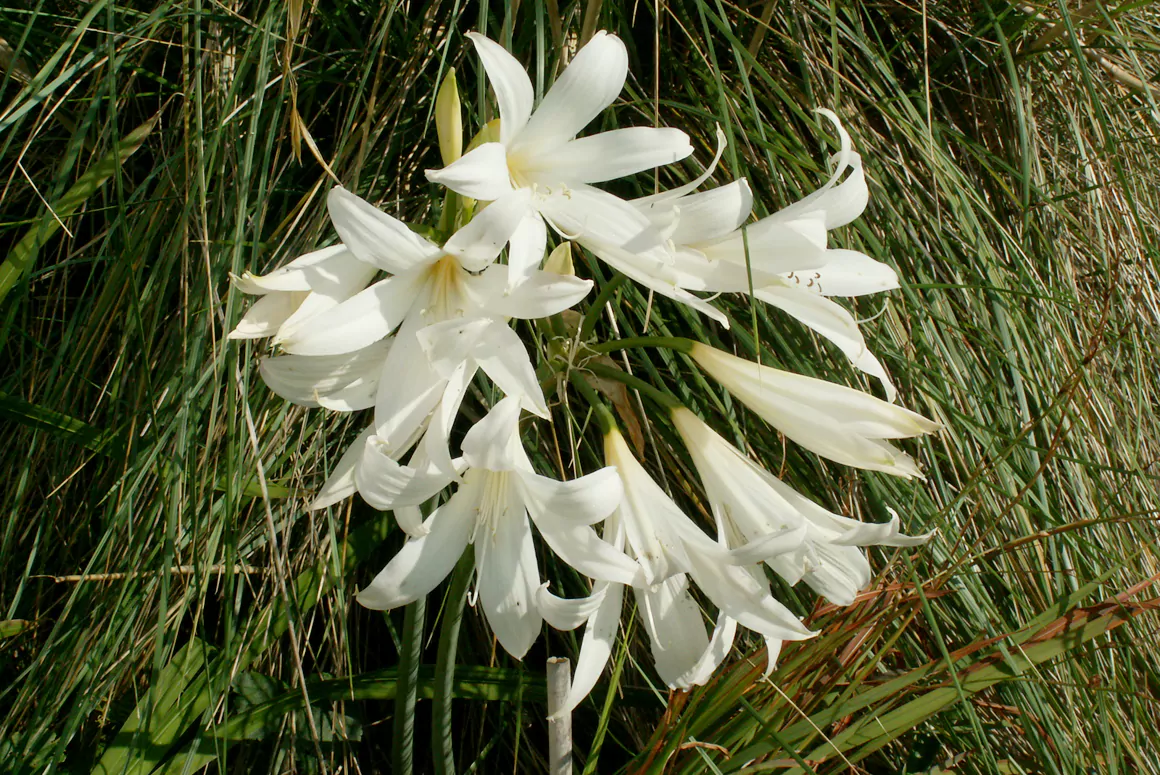![]()
When the cold, harsh winter has given its last breath,
When the sky above shows life instead of death,
When the claws reaching to the frozen sky become decorated with leaves,
When the animals -long in hiding- scurry from trees,
We know winter has ended.
Spring by Camille Gotera
This winter seems to have lasted forever and apart from an abnormally cold snap in December, it has rained with unremitting persistence. The aforementioned ‘snap’ also put paid to my oft trumpeted declaration that my garden had become ‘frost free’. A low of -4 was sufficient to damage many of my borderline southern hemisphere specialities and indeed killed a number but several Banksias and Puyas appear unscathed.
“Pride comes before a fall”!
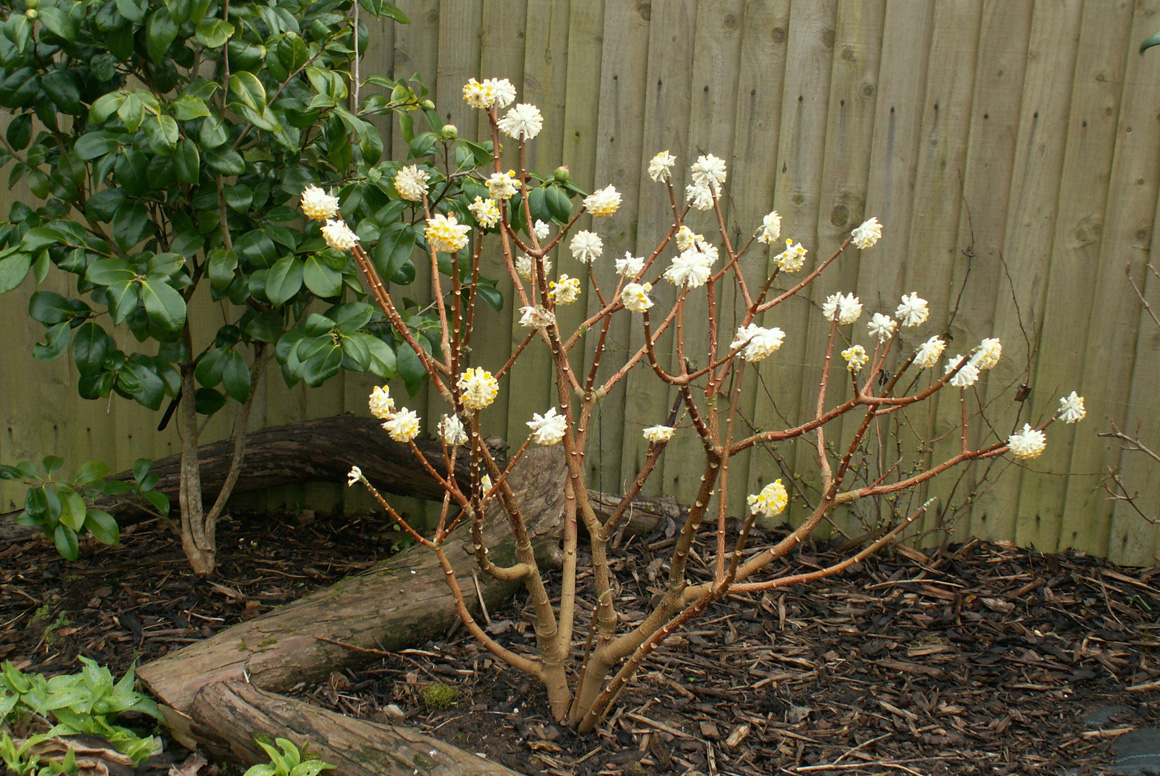
As a rule, if a particular plant dies three times, I do not attempt a fourth try, accepting that I am unable to provide conditions for its successful cultivation. However, Edgeworthia chrysantha is such a beauty that I have made an exception. A biologically close relative of Daphnes it resembles them in form and the fact that it was also used in China to make paper. Its round heads of fragrant yellow flowers open early in the year but are prominently carried all winter. Red and orange forms occur and are sometimes available commercially. Careful planting is required because it does not tolerate unsuitable soils especially any trace of waterlogging. It succeeds best in slightly acid soils with the ‘mythical’ quality of moist but well drained. My current incumbent has been planted in a deep humus enriched loam and to date appears to be happy but watch this space! It is worth every effort.
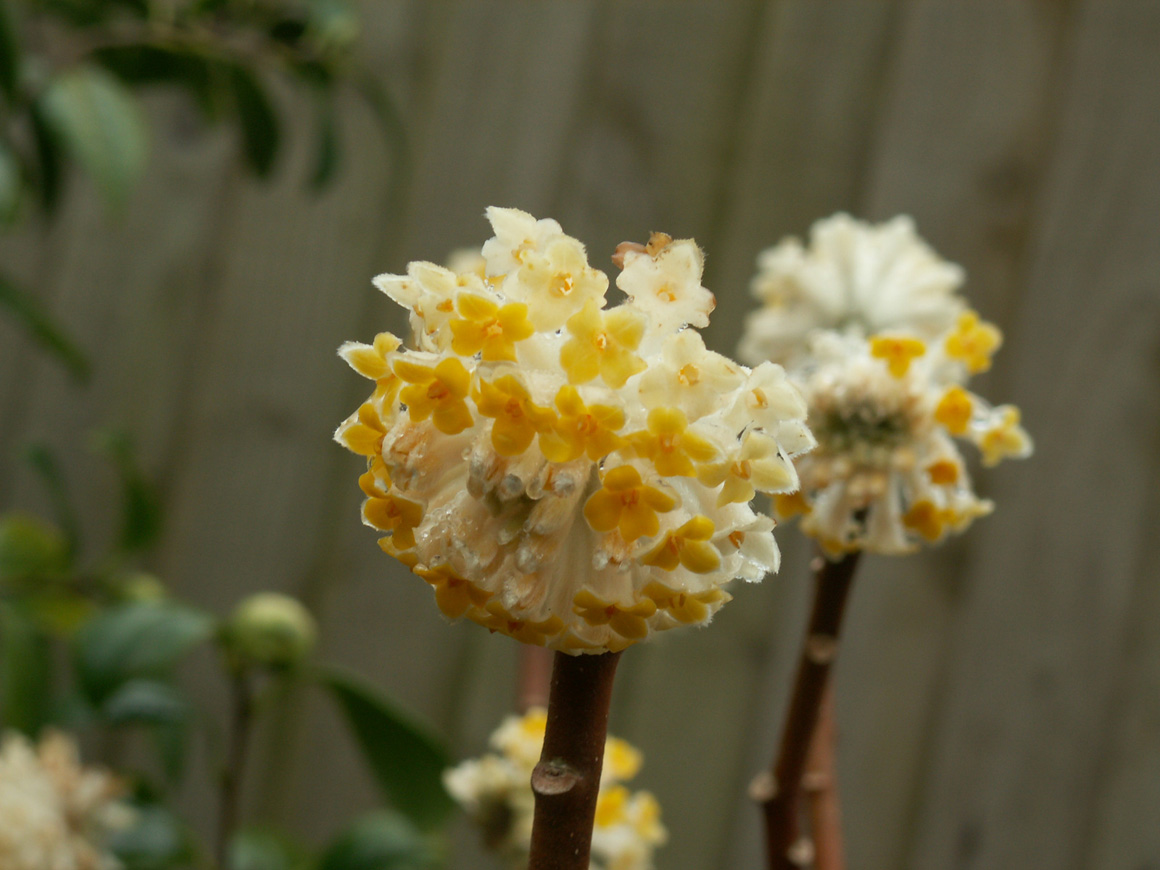
Fatsia japonica in its natural form is a rather unspectacular plant, with large jaggedly palmate leaves, useful for its ability to tolerate windy coastal positions and to grow in difficult situations but not in any way ‘showy’. In its form ’Variegata’ it is much showier; however I have found a tendency for the variegated leaf edges to brown and wither if exposed to even a small amount of sunlight and no longer grow it. A relatively recent introduction, ’Spider’s Web’ also has variegation but in the manner of small white spots along the leaf edges and sometimes extending across the whole leaf. I have used this quality to enlighten dark corners and since variegation reduces growth it requires little attention. Despite initial reservations I have decided to like it!
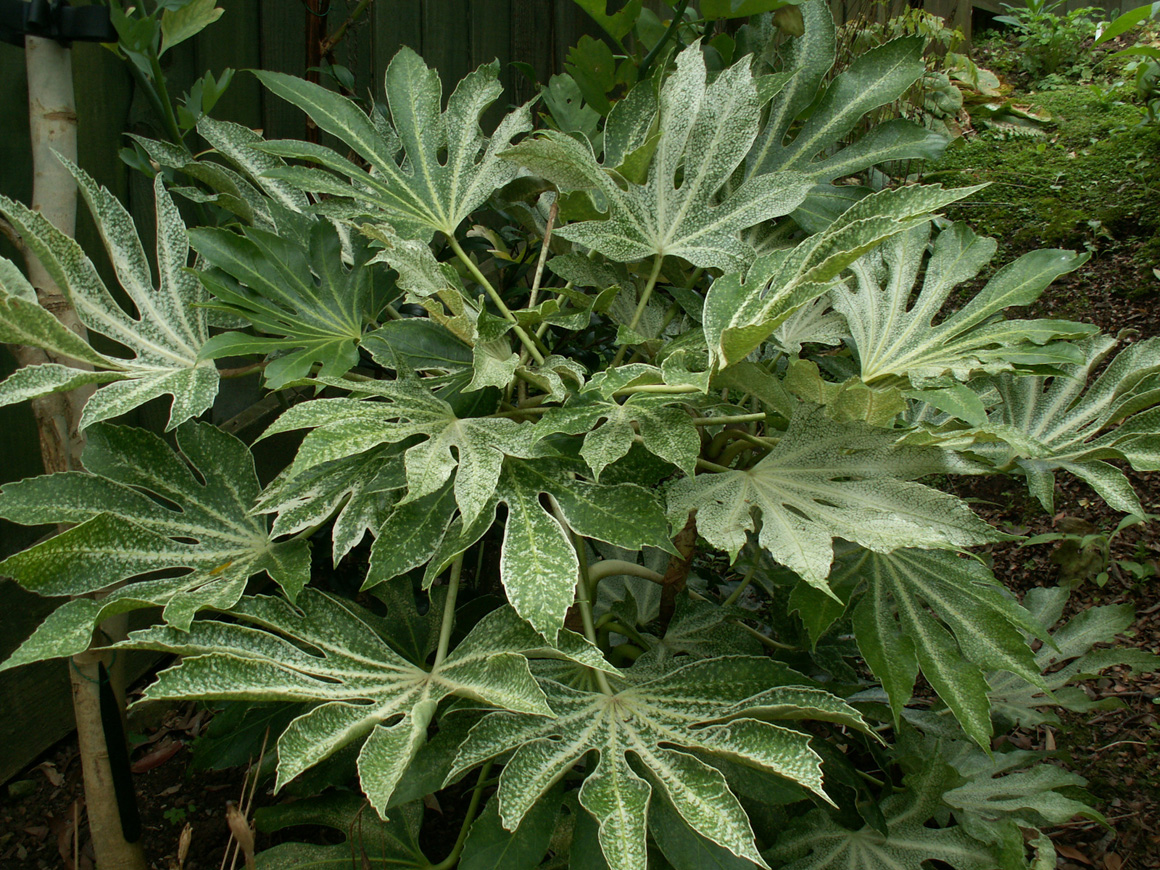
As we move to lengthening warmer days increasing numbers of National Garden Scheme owners generously allow the public to share in their pleasure and consequently contribute to national charities.
Shoals Hook Farm
In the far west of the Principality in Haverfordwest is Shoals Hook Farm a 6 acre garden on a smallholding including a vegetable garden and newly planted small orchard. Developed over 26 years it has been planted for different seasons and wildlife. In Spring enjoy the many bulbs, lake garden and woodland walk with specimen trees that include Chinese silver birch, red stemmed birch, maple and tulip trees.
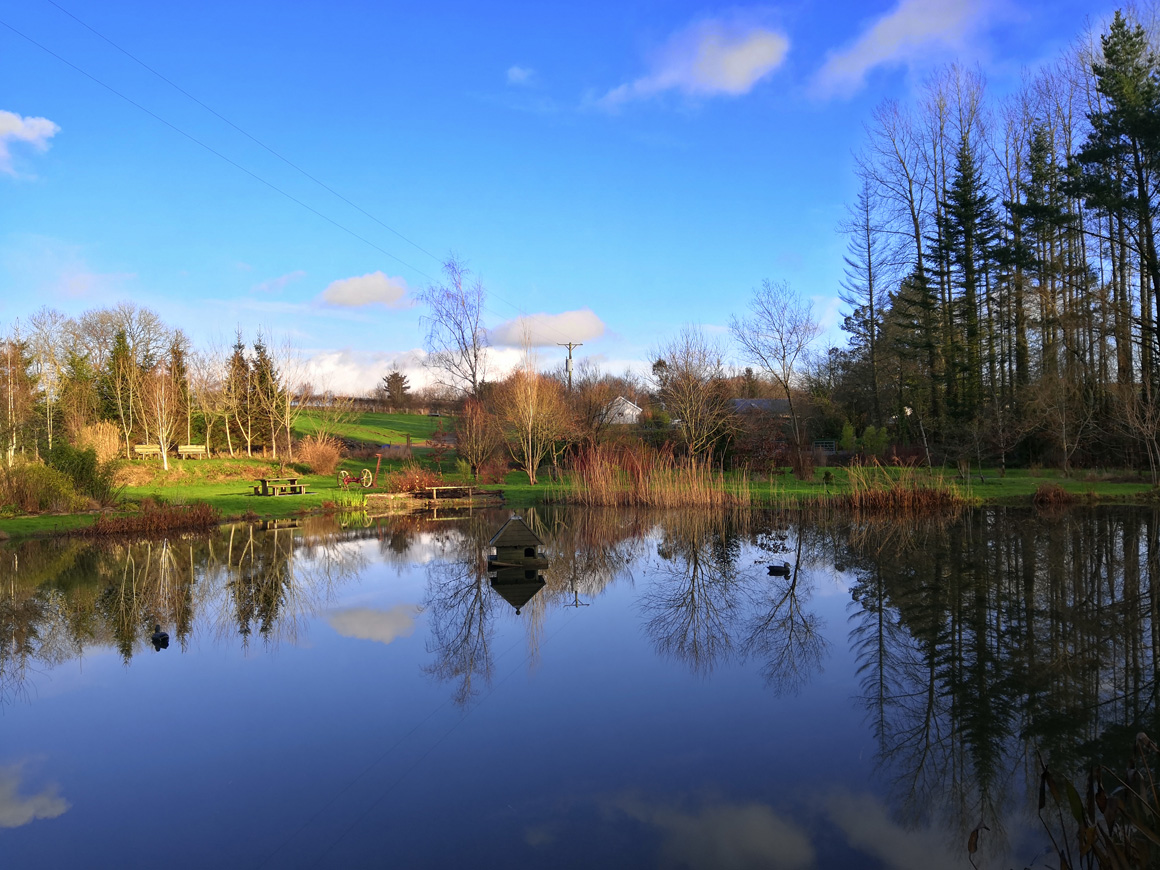
Gileston Manor
The Vale of Glamorgan is a beautiful area and the historic 9 acre estate Gileston Manor is surrounded by wonderful countryside with breathtaking views across the Jurassic coast. Dating back to 1320 and now lovingly renovated and restored by the current owners, it is a perfect blend of old and new. The walled garden gates at the front of the listed Manor House lead to sweeping front lawns which themselves lead to a David Emmanuel white border and a variety of beautiful trees. Wander through the rookery to meet the swans and ducks on the pretty pond, pet alpacas and Sian the sheep!
Llanidan Hall
Llanidan Hall in Gwynedd has a wonderful sheltered walled garden of 1¾ acres including physic and herb gardens, ornamental vegetable garden and water features. An unusual curving rectangular lake is home to ducks and there are sheep, rabbits and hens to see. The adjacent C7 church of St. Nidan is also open to visitors on NGS Open Garden days.
Garregllwyd
With stunning panoramic views of Mid-Wales the 3 acre landscaped garden Garregllwyd near Rhayader lies at an altitude of 1000 feet. Large ponds with an abundance of wildlife feature together with unusual specimen trees, bluebells, rhododendrons and seasonal vegetables. A garden designed to cope with exposed altitude with minimal maintenance! Enjoy the ever-changing weather from a variety of seating areas.
Glebe House
Glebe House near Abergavenny has borders bursting with colour, provided by tulips, narcissi, camassias and others emerging amongst the herbaceous perennials in April. Walk through the mown paths of the orchard that are filled with a succession of bulbs and two spectacular cornus as well as fruit trees. The old Rectory at St. Mary’s, Llanfair Kilgeddin, will also be open for views of its famous Victorian scraffito murals.
The joys of spring await. An abundance of blossoms lies ahead especially in woodland areas which will continue until the developing canopy shuts out sunlight. Enjoy it with a garden visit.
NGS Open Gardens
Welsh Country has two NGS open garden sections. The first ‘Open Gardens’ are gardens that are open on specific days and the ‘Long Term Open Gardens’ which are by appointment only. There is a search facility on each page so simply search for a garden name or an area of Wales (i.e. Swansea) you’d like to visit.



